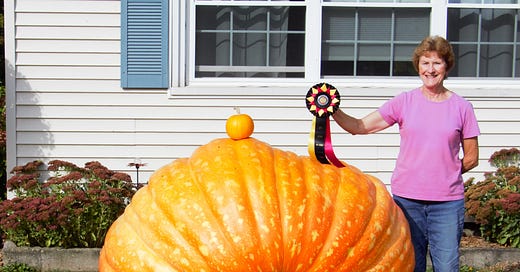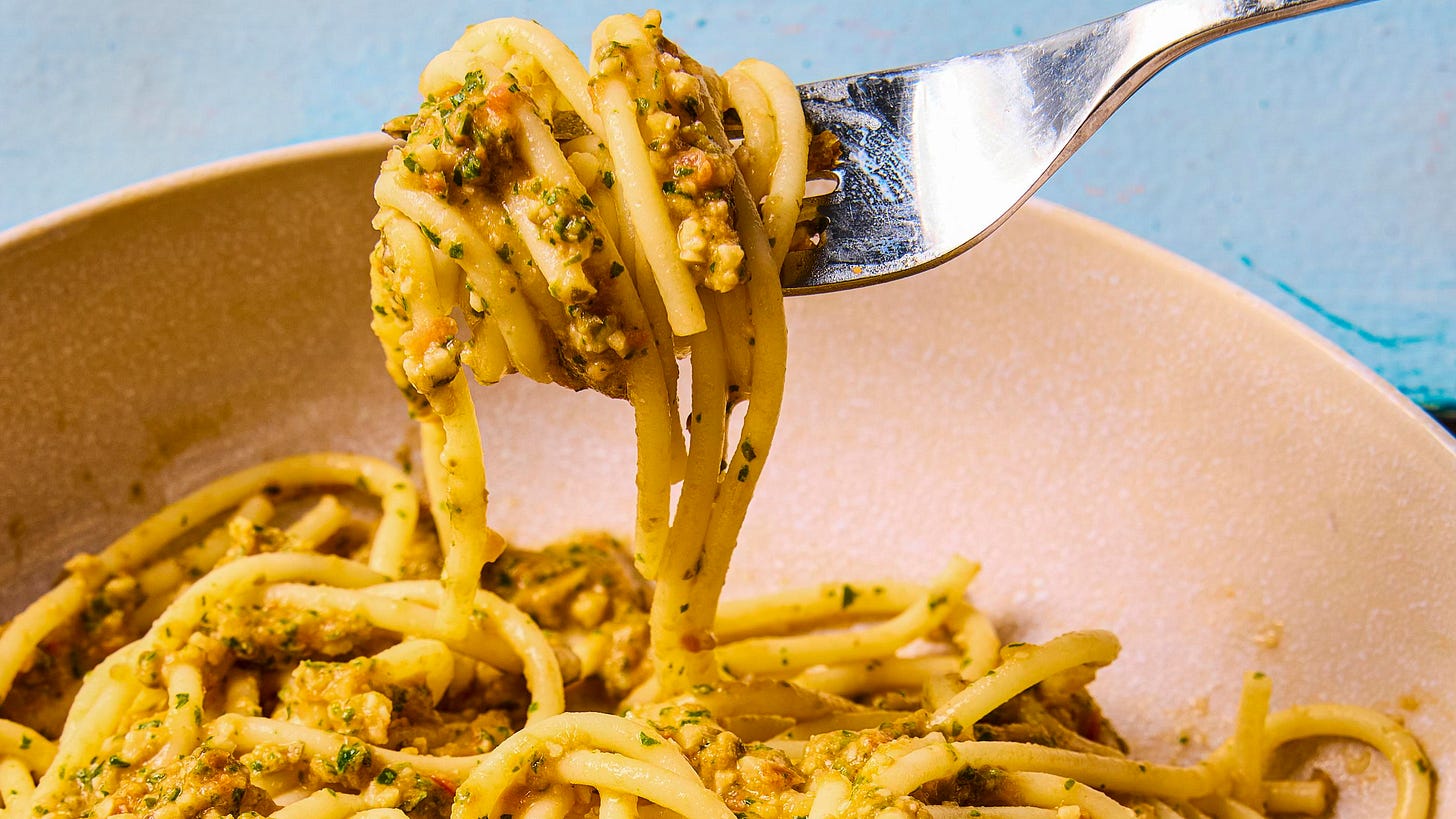The Sunday Paper Edition: Giant Pumpkin, Recipe, Nature Sighting and More!
Consider subscribing to our print edition!
On Sunday, we post a wide assortment of items. Here are today’s:
Now That’s a Great Pumpkin!
Laural Keys knows her pumpkins! In fact, she grew a Giant Pumpkin in her Salem fields that took 3rd Place in the Colchester, Vermont Annual Giant Pumpkin Weigh-Off, sponsored by the Vermont State Pumpkin Growers, on Saturday, September 19. Her award-winning giant pumpkin, shown in the photos, weighed in at a whopping 1,335.5 pounds.
Growing a giant pumpkin is no easy undertaking. Keys regularly tended the giant pumpkin while still in the fields, moving the vines away from the growing pumpkin to avoid any rot. As the pumpkin matured into a giant pumpkin, Mrs. Keys carefully covered the pumpkin with blankets to avoid the soft rind from being damaged by being bumped or scratched. Once the blossom side vine had been cut away, she routinely dried the large stem with a blower to assure no water rot would occur that could damage or weaken the giant pumpkin. Ten years ago Keys was awarded second place in the same competition for a Giant Pumpkin weighing in at 1,439 pounds.
Congratulations to Keys who is shown at her home in Salem with the beautiful ribbon she was awarded by the Vermont State Pumpkin Growers and standing next to her winning 1,335.5-pound Giant Pumpkin. —Jan Baxter
Try This Recipe: America’s Test Kitchen
By Eric Haessler
Special to Journal & Press
Pantelleria is an island off the coast of Sicily, and pesto pantesco is the island’s version of Italy’s iconic mashed sauce. It’s made by pulverizing locally grown staples such as tomatoes, garlic, basil and/or parsley, almonds and, most notably, capers with olive oil until the mixture is coarsely pureed.
Salted capers are the hallmark of pesto pantesco.Including a generous 3 tablespoons (rinsed thoroughly of undissolved salt lest it potentially overseason the sauce) added unique funky, meaty depth and nuanced pepperiness.
Blitzing the almonds in the food processor ahead of the other ingredients ensured that they broke down into evenly sized bits. Pulsing in the tomatoes, herbs, capers and garlic broke them down without pureeing them, and streaming in the olive oil helped the sauce emulsify. Adding the pesto to the pasta in two stages helped it distribute evenly.
Pesto Pantesco with Spaghetti
Serves 4 to 6
2/3 cup slivered almonds, toasted
1 1/4 pounds tomatoes, cored and quartered
3/4 cup fresh basil leaves
1/2 cup fresh parsley leaves
3 tablespoons salted capers, rinsed well
1 garlic clove, peeled
1/2 teaspoon table salt plus salt for cooking pasta
1/4 teaspoon red pepper flakes
1/2 cup extra-virgin olive oil
1 pound spaghetti
1. Bring 4 quarts water to boil in a large pot. While water is coming to boil, pulse almonds in a food processor until most pieces are no bigger than 1/4 inch, 8 to 10 pulses. Add tomatoes, basil, parsley, capers, garlic, salt, and pepper flakes, and pulse until cohesive mixture forms, 8 to 10 pulses. Scrape down sides of bowl. With processor running, slowly add oil in steady steam until emulsified, 15 to 20 seconds. Transfer half of pesto to large serving bowl.
2. Add pasta and 1 tablespoon salt to boiling water and cook, stirring often, until al dente. Reserve 1/4 cup cooking water, then drain pasta and transfer to bowl with pesto. Top with remaining pesto and toss until well combined, taking care not to leave pesto at bottom of bowl. Adjust consistency with reserved cooking water as needed, 1 tablespoon at a time. Season with salt to taste, and serve immediately.
The Sunday Funnies
‘Broom Hilda’ by Russell Myers
‘Animal Crackers’ by Mike Osbun
‘Filbert’ by LA Bonte
‘The Middletons’ by Dana Summers
Sightings
By Bob Henke
Journal & Press
Unlike my own carefully reasoned and conservative mindset, my brother Guy is a master of hyperbole and magnificently illogical leaps of reasoning. Accordingly, I received this photo along with a note reading, “So Bob, this little guy is not real wooly, has no black, and is heading due north. He is telling you not to bother putting the plow on this winter.” Of course, the little caterpillar is not the familiar wooly bear at all but rather a Virginian tiger moth caterpillar and of no particular value interpreting the weather. The folklore regarding the amount of black on a wooly bear predicting the intensity of the winter is, however, not without some basis in fact. Wooly bear eggs, waiting for warm temperatures to hatch in the spring after remaining dormant for the winter, develop red color in accordance with the amount of daylight when they hatch. Thus the black band does not predict the next winter, but does reflect the weather last year. And it makes no difference which direction they are traveling.
Contact Bob Henke with your sightings or questions by mail c/o The Greenwich Journal & Salem Press, by email at outdoors.tomorrow@gmail.com, on Twitter at @BobHenke, or on Facebook.
Make Your Picks!
Games are about to begin! Be sure to make your picks before 1 p.m. Newcomers welcome! Click above!
How Did Greenwich Do in the Weekend Football Game?
They beat Stillwater and are 4-0. Find photos and results on our Facebook Page: fb.com/journalpress!
Get a Print Subscription
We know that this newsletter has a “life of its own,” but if you find yourself enjoying it maybe consider getting a good ol’ fashioned print subscription to The Greenwich Journal to get even more great content — in printed form. It’s only $42 a year — that’s only $1.75 an issue, mailed to you and giving you a great amount of reading pleasure. At the very least, it looks nice on your coffee table. Click here to subscribe!
And/or subscribe to this newsletter (if you don’t already):
Have a great day — more tomorrow to start your week!















